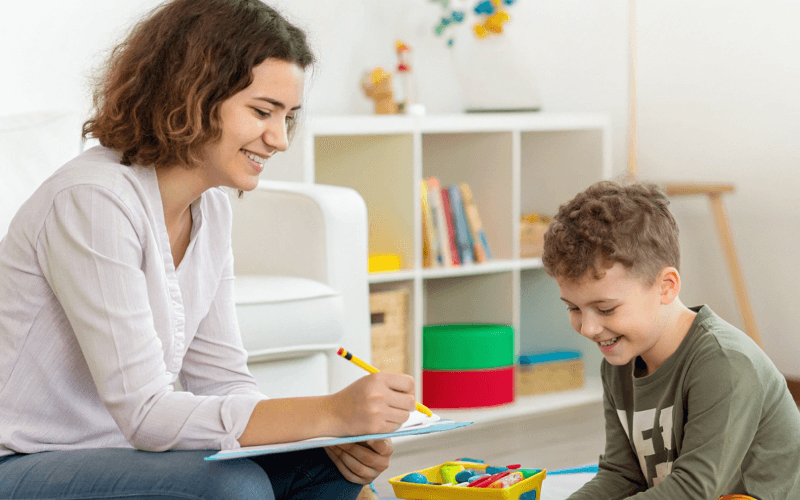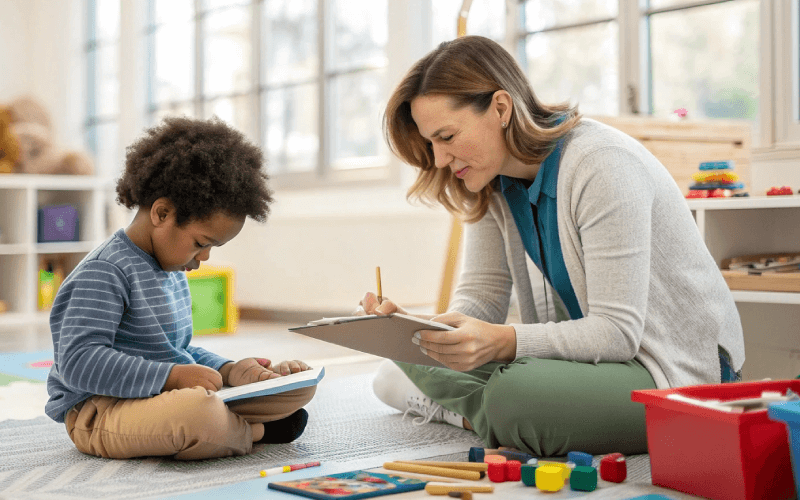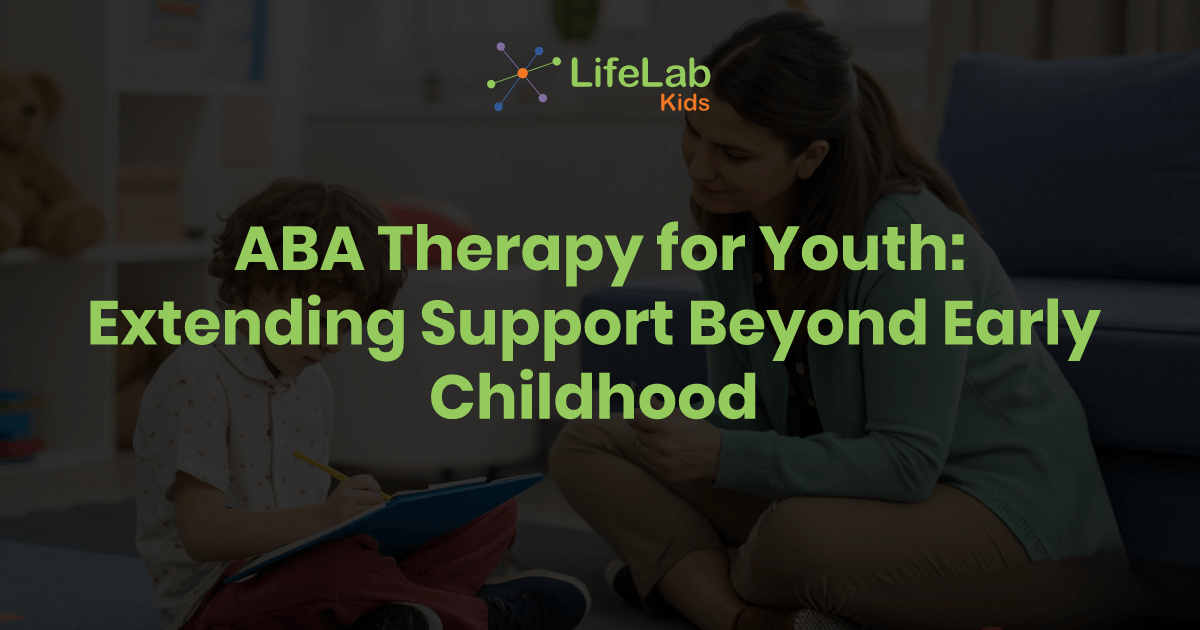When people first hear about Applied Behavior Analysis (ABA) for neurodiverse children, they might imagine small children who are learning to communicate, follow routines, and slowly taking their first step towards independence. Families are often told about how “early intervention” is crucial, and it is true in many ways. But what happens after early childhood? What about the children who grow older, who step into the world of adolescence, where new challenges and dreams are waiting for them?
This part of the story may go untold. Though it is a story of full growth, hope, and possibility because ABA therapy does not stop being meaningful once childhood ends. For many families, the journey continues as the child enters adolescence, carrying strength, new questions, and opportunity with them.

The Journey Beyond Childhood
Imagine a child, who once needed support to express their needs with words, but with years of ABA therapy it helped them develop communication skills like pointing, speaking, singing and slowly opening to the world. Now as youth, their needs have changed, they want to make friends, navigate social spaces, or explore hobbies.
The goals may differ, but the foundation remains the same—helping youth with autism grow in ways that best support their development. ABA does not only teach skills, but it helps a child grow and adapt to becoming a companion to their evolving journey.
We have often heard parents at LifeLab Kids say, “I didn’t know ABA could still help at this stage.” But it does help, not just in homes, but in schools, communities, and everyday life.
Meeting the Needs of Youth
Youth bring a different energy to therapy. They might be curious, determined, or eager to define their own place in the world. This stage of life is full of “firsts”:
- First time managing more independence.
- First time handling group projects in school.
- First time navigating friendships and social dynamics.
- First time thinking about future goals.
Each of these milestones comes with excitement, and sometimes uncertainty. ABA therapy steps in as a gentle guide, offering practical tools and encouragement that help young people build confidence.
Every skill learned becomes a steppingstone toward independence and belonging.

Building Life Skills
The teenage years bring practical challenges such as managing money, traveling independently, and planning for future education. ABA therapy helps in breaking these skills into small steps, making them meaningful and achievable.
For example:
- A youth might practice ordering food at a restaurant, which helps them in gaining confidence in public settings.
- Learning to use public transport and rehearsing the routes and safety steps until they feel safe and secure.
- They may explore vocational training, using ABA strategies to build communication, time management, and problem-solving skills.
Each success helps in building independence and pride. Families often describe the joy of seeing their child accomplish something they once thought was impossible.
Social Connections and Friendship
One of the most important parts of youth is building friendships. But for youth with autism, social interactions may feel too much. ABA therapy helps in improving social interactions and relationships. Therapists help in developing skills such as:
- Initiating conversations
- Interpreting non-verbal cues
- Participating in group activities
These moments of connection are changing. When a youth laughs with a friend, sharing a hobby, or joining a group activity, it builds a sense of belonging which no program can replace. ABA therapy provides them with the tool to access that joy.
Emotional Growth and Self-Advocacy
As a child enters into adolescence, emotions depend on and become more complex. They might face new challenges in self-confidence or in understanding how they can express their needs. ABA therapy provides them the strategies for self-regulation, mindfulness, and coping, helping them to navigate emotions with strength and clarity.
It is important to learn voice preferences, setting boundaries, and making choices. For many youths with autism, this is life changing. They know about the power of saying, “This is what I like,”; “I need help with this”, or even a “No, thank you.”
These are not just words; they are the base of independence and self-respect.
Benefits of ABA therapy for Youth
ABA therapy offers various benefits for teenagers with autism, making it a transformative autism intervention during crucial years in an adolescent’s life. Some of the benefits of ABA therapy include:
- Individualized Approach: ABA therapy plans can be customized as per the needs of each teen according to their strengths, challenges, and goals.
- Evidence-Based Success: ABA therapy provides a strong base of evidence supporting its effectiveness in improving various aspects of behavior and development in teens with autism.
- Promotes Independence: By focusing on social, communication, and life skills, ABA therapy lets teenagers become more independent, improving overall quality of life.
- Family Involvement: ABA therapy includes parents and caregivers in the treatment process, providing them with the tools and strategies required to support their teenagers at home and in the community.
- Long-Term Impact: The skills learned through ABA therapy extends beyond the therapy sessions, positively influencing various aspects of the teenager’s life.
The Role of Family and Community
ABA therapy is not just about the child; it involves families, caregivers, and communities. Parents learn new ways to support independence at home. Teachers collaborate to reinforce skills in classrooms. Community spaces become welcoming environments where youth can practice and flourish.
When everyone works together, growth multiplies. Families describe the experience as “seeing the world open wider” for their children.
Preparing for the Future
Parents often become worried about the future; they may get thoughts like “What will life look like when my child grows older? Will they find happiness, independence, and a place in the world?”
ABA therapy does not promise a single answer, because every child’s journey is different, but it does provide tools, strategies, and support. The future is not something to fear about, it is a space for preparation, step-by-step, with hope and determination.
A Story Still Unfolding
ABA therapy for youth is not the end of the journey. It is the continuation of a story that began in early childhood and keeps unfolding with each new chapter. It’s about:
- Laughter of a person when they make their first group of friends.
- The determination of someone learning public transport for the first time.
- The joy of a family seeing their child’s dream starts to take shape.
These are the stories that matter. These are the moments that remind us that growth does not stop with childhood, it evolves, expands, and surprises us with its beauty.
Conclusion
ABA therapy is a companion through the evolving stages of life. For youth, it becomes a guide towards independence, confidence, and joy.
As families step into this stage, they often find themselves both nervous and hopeful. But with every new skill, every friendship formed, every goal achieved, the path forward shines a little brighter.
At LifeLab Kids, we are surrounded by spaces where creativity, fitness, and therapy come together. Here, every step we take, whether it is learning a new skill, building a friendship or chasing a dream, is celebrated. With the right support, we continue to write new chapters which are filled with possibility, pride and belonging.
The message is simple: support doesn’t end with early childhood. With ABA therapy, youth continue to grow, discover, and write new chapters of their lives filled with possibility.

